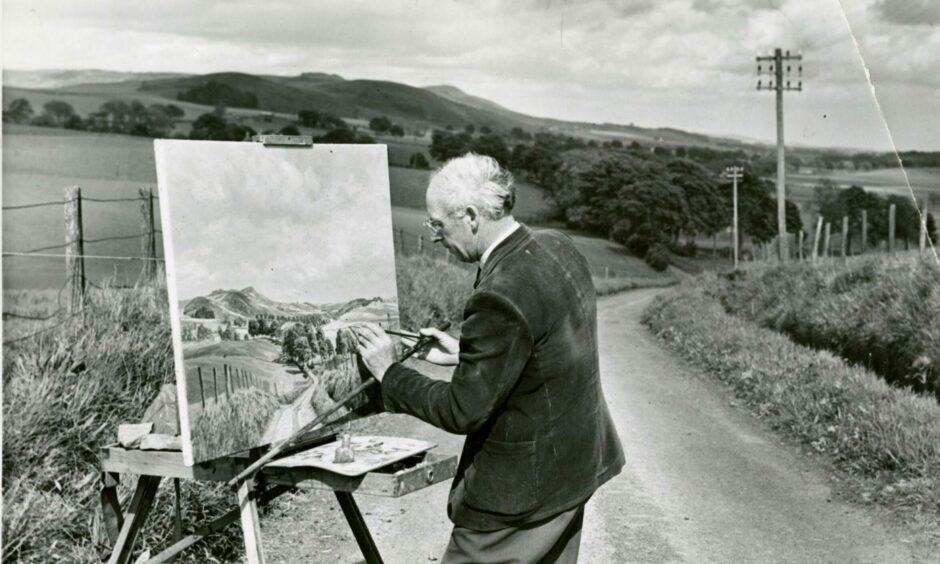
A forgotten sketch by landscape painter James McIntosh Patrick has been discovered ahead of an open day celebrating his links to Dundee Art Society.
The Howff of Dundee was published in The Courier on March 15 1930.
The sketch was found by committee member Alasdair Chisholm whilst researching the society’s history in preparation for Saturday’s event at the Roseangle Gallery.
The open day will recognise the importance of McIntosh Patrick as an artist and member of the society and will kick off a series of events throughout the year.
Ann McIntosh Patrick will unveil a new plaque in honour of her father to mark the naming of part of the gallery as The McIntosh Patrick Gallery during the afternoon.
Artistic talent shone through
Born in the city in 1907, the son of an architect father and linenware designer, James McIntosh Patrick grew up in the Downfield and Fairmuir Park areas.
His artistic talent was spotted at an early age and, by the time he moved to Morgan Academy at 11, he had already been drawing for five years.
He then went on to complete a four-year course at Glasgow School of Art in just three years and a further year’s post-diploma study.
In 1925 McIntosh Patrick exhibited for the first time in the Scottish Academy.
Three years later, at the age of 21, he had a picture in the Royal Academy.
He followed up his intricate etchings from the 1920s with a highly-successful series of oil paintings which were exhibited at the annual Royal Academy shows in London.
McIntosh Patrick joined the staff of Dundee School of Art in 1929, initially to teach etching and later painting and art history.
He continued to teach there for most of the rest of his life, latterly in highly popular non-vocational painting classes on Saturday mornings.
He married Janet in 1933 and their son Andrew was born a year later.
Daughter Ann, herself a talented artist, arrived in 1937.
By that time McIntosh Patrick was elected Associate of the Royal Society of Painter-Etchers and Engravers and in 1935 his painting Marion was given the Guthrie Award.
Significantly, that was also the year Winter in Angus was presented to the Tate Gallery and he began work on the other three of the world-renowned Four Seasons quartet.
The war brought his second and final long stay away from Dundee.
McIntosh Patrick was commissioned as a major in the Camouflage Wing of the Royal School of Military Engineering and served mainly in Italy and North Africa.
His time abroad, deprived of a studio, changed his whole approach to painting and he began to work predominantly outside.
He was elected to the Royal Scottish Academy in 1957.
Solo shows were held at Dundee City Art Gallery in 1967, and again in 1987, where the high regard in which Dundonians held McIntosh Patrick was highlighted when tens of thousands visited his 80th birthday exhibition in the McManus Galleries. His 90th birthday was marked by an exhibition at the Scottish National Gallery of Modern Art.
He was awarded an Honorary Degree of Doctor of Laws by Dundee University in 1973 and an Honorary Fellowship of Duncan of Jordanstone College in 1986.
The former Dundee Citizen of the Year died aged 91 in 1998.
Alasdair said: “Although a long-standing member, becoming president 1941, and supporter of the Dundee Art Society, this is the first physical recognition of his support.
“Ann is delighted to have her father memorialised in this way and will come along at 1pm to join us and unveil a new plaque.”
So what else is on the horizon?
Alasdair said: “We’ll be introducing a new display on the past and present presidents to tell the story of our evolution from ladies in lavish gowns at exhibition openings to more modern days and displays including dead chickens and everything in between.
“There will be an exhibition of works and we also hope to introduce a planned guided tour of the Roseangle building, highlighting the people and the art produced since 1890.
“Also this summer a number of McIntosh Patrick paintings will on display as part of the Four Dundee Artists exhibition alongside works by Ian GM Eadie, whose life spanned the years 1913 to 1973, Alberto Morrocco and David McClure.
“Most of the paintings on display will be borrowed from private owners.
“As well as McIntosh Patrick’s well-known paintings of the Angus and Perthshire countryside, some of his etchings will be shown, and also some early watercolours from France.”
The history of Dundee Art Society
Matthew Jarron from the University of Dundee has charted the origins of Dundee Art Society which go back to the late 19th century when the city was the world’s jute capital.
He said: “At the same time, many mill and factory owners became immensely wealthy and art was one of the principal means that they could show off their new social and cultural status. These local businessmen came together to found a museum and art gallery in the Albert Institute (now The McManus) and helped to organise major art exhibitions that were the largest of their kind outside London.
“All of this activity coincided with increased provision of art education in the city and an increase in employment opportunities for artists (particularly through the growth of newspaper and magazine illustration), which meant that the number of professional artists in the city grew significantly.”
Dundee Art Society was founded in 1890 to help promote their collective interests.
Although the focus of activity was on promoting the interest of the city’s professional artists, throughout its history the society always had a greater number of amateur artists than professional.
The society began to hold annual exhibitions in the Albert Institute from 1893 and was also holding frequent smaller shows in its own rooms by the early 1900s.
The society first rented its own accommodation in 1900 in 104 Nethergate, sharing premises with the Dundee Institute of Architecture, Science and Art.
Moving to Roseangle in 1949
It later moved to the Queen’s Hotel and then to South Tay Street before purchasing its current home in Roseangle in 1949 when membership was standing at over 300.
Matthew said: “The post-war era saw a major expansion of the city’s Art College and many of its new tutors became active members, including Alberto Morrocco and David McClure, and a new Student Associate membership class attracted many younger members.
“It was only in the 1980s that the gap between professional and amateur artists widened dramatically, caused partially by the growth of conceptual and installation artforms as well as the development of a new research culture within the Art College as it started awarding degrees instead of diplomas.
“Although long-standing members such as McIntosh Patrick and James Reville continued to support the society, its membership since then has largely comprised amateur artists.
“Membership numbers have remained strong, however, and the society has continued an active programme of exhibitions and events, and is now one of the longest-running art associations in the country.”
Saturday’s open day at Roseangle Gallery takes place from 10am until 4pm.
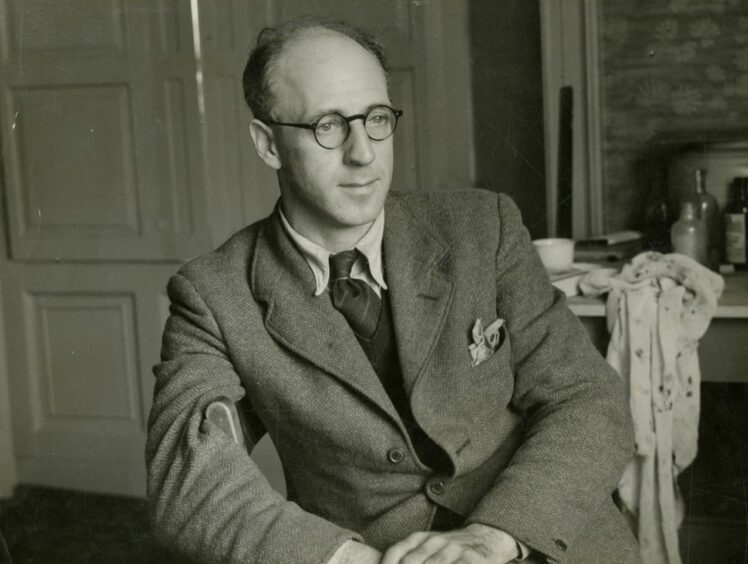
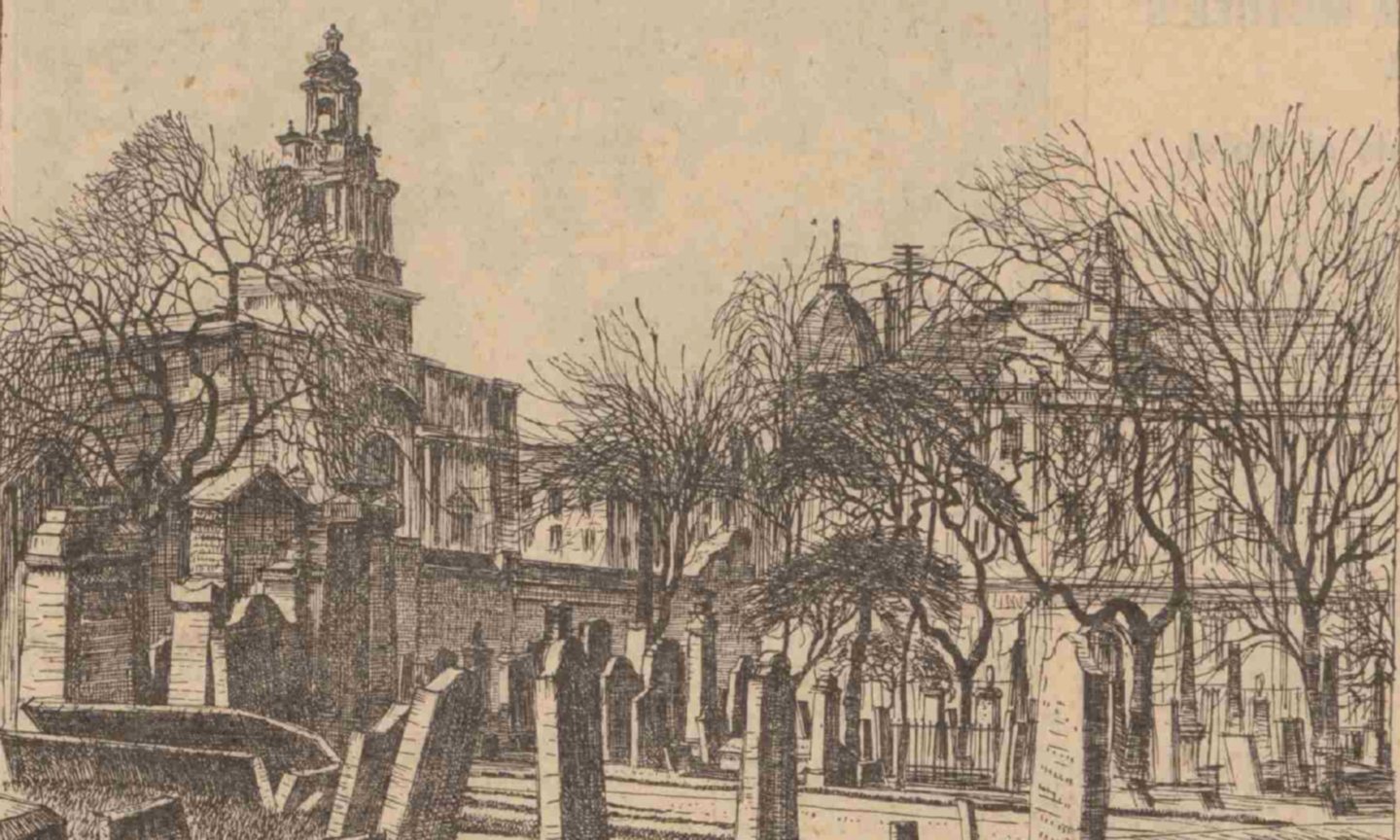
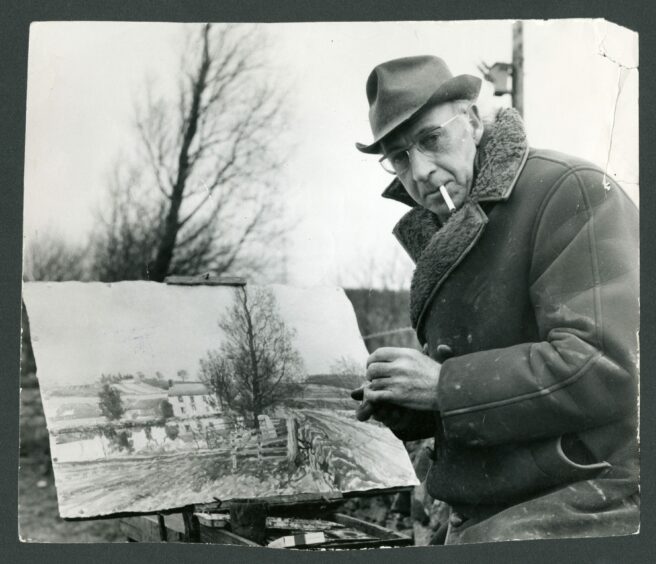
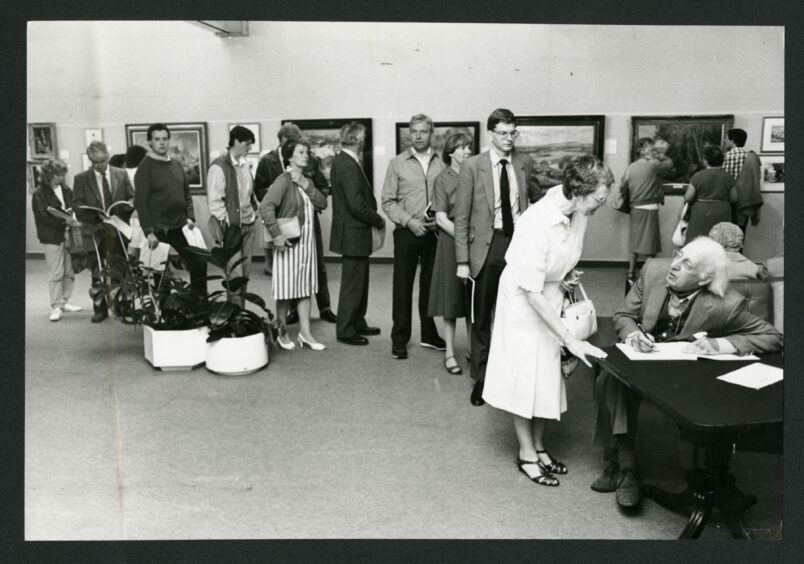

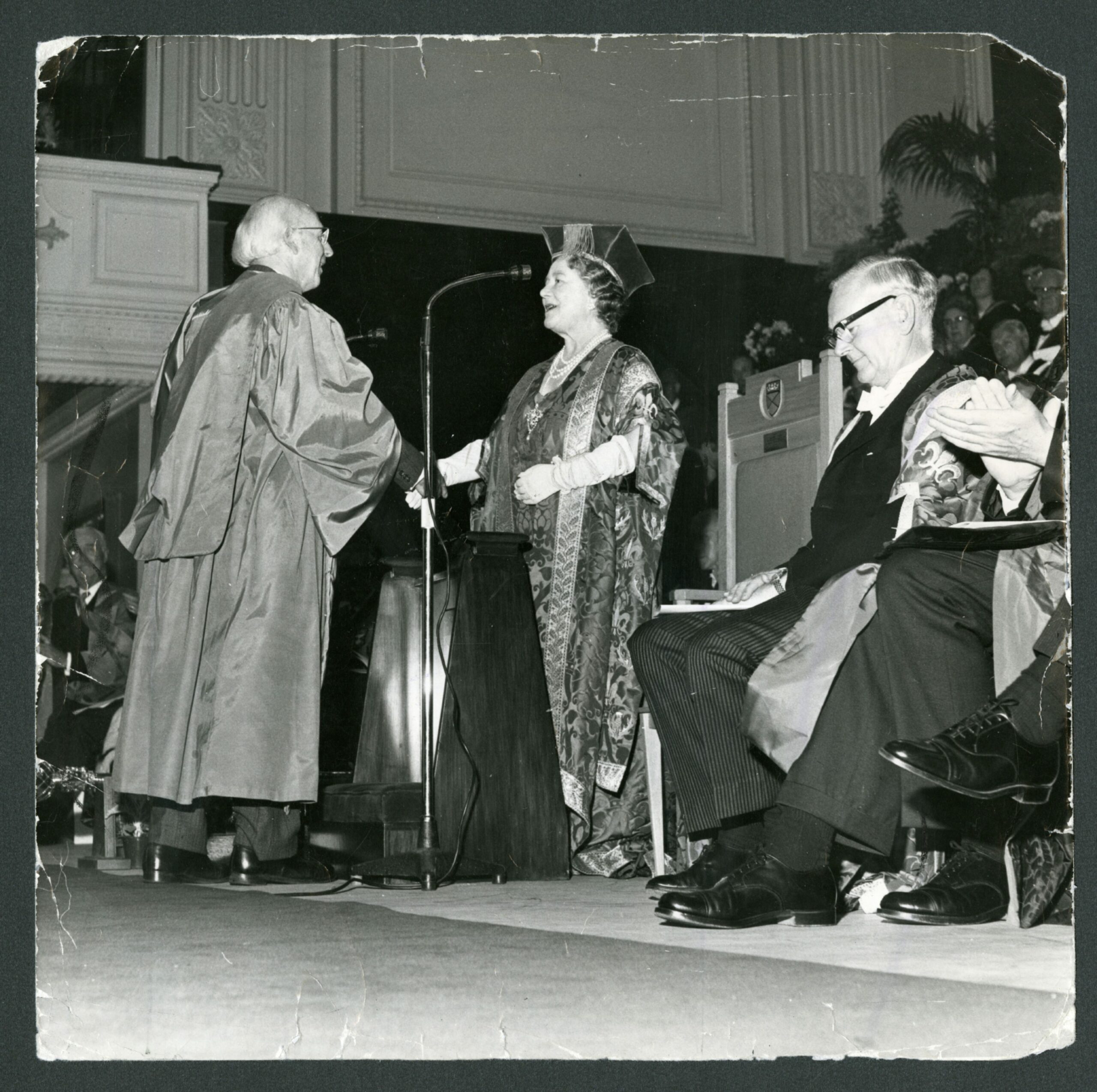
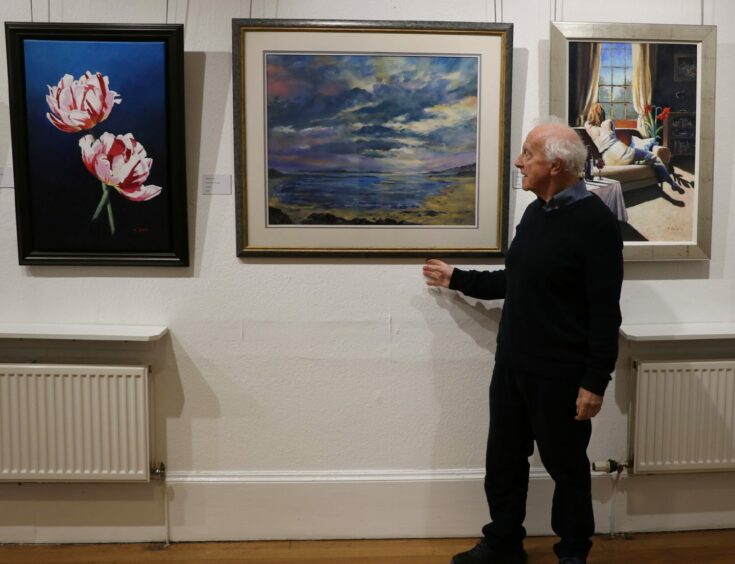










Conversation